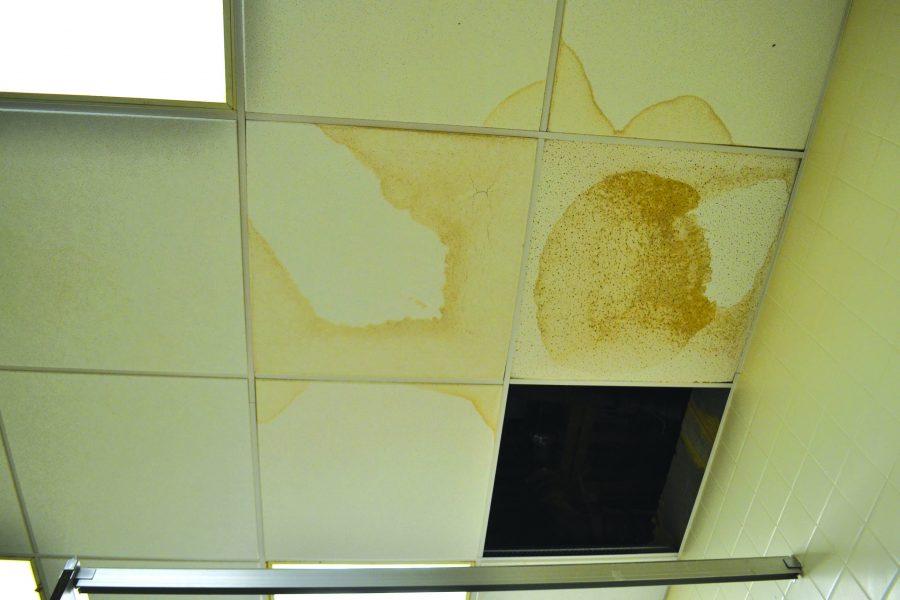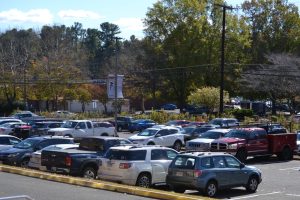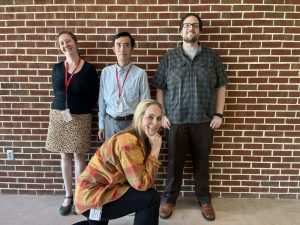Cube condition causes concern
December 9, 2016
The cube, a 1979 addition to the original 100s hallway that was left as a standalone structure when the new building was built, is enjoyed by many teachers and students for its access to the courtyard and large classrooms. It serves as home to the language and business departments, but it’s also becoming known for its growing list of problems, including the condition of the bathrooms, pests, and the lack of electrical outlets.
According to Assistant Principal Kraig Kelican, however, the issue creating the most concern is the condition of the heating and air conditioning units.
“When you have condensation leaks that then go through the floor and then go through the ceiling below, it creates additional problems,” Kelican said. “I think overall, the building itself is in decent shape, but the heating and air conditioning is the biggest problem.”
The issues with the drainage of the units have caused leaks and even flooding in some rooms.
“If you notice the water that drips from upstairs, that’s coming from the units upstairs,” French teacher Nicole Goepper said. “Best case scenario, they drip outside of the building, but the real scenario is that they drip down into the classrooms below them.”
According to marketing teacher Kathleen Lynch, teachers have no control over the thermostat, so the classroom environment is almost never a comfortable temperature.
“It’s either blowing cold air or it’s blowing really hot air, and the thermostat doesn’t seem to be able to detect any kind of normal temperature,” Lynch said. “I have full classes, so when students get in here, the AC itself is not able to keep up with the body heat.”
The situation has often been a source of discomfort and distraction for students during class.
“It’s just too hot,” senior J.R. Sweeney said. “I don’t want to sweat all over my clothes at school. It’s kind of hard to focus on getting your work done when it’s a thousand degrees.”
The school administration and the Department of Facilities and Construction are currently exploring options to solve the problem.
“Right now, we’re just doing the best we can with what’s down there,” Kelican said. “They are so old that we’re just trying to keep them running until we can get a plan in place. It’s up to our facilities department, but I know that they’re actively looking at the scope of the project and the money. I anticipate [a solution in] the very near future.”
Kelican hopes that the HVAC units currently installed in the cube will be replaced with more eco-friendly and energy-conserving units.
“Since we went with the geothermal system in [the new] building, I’m sure they would like to focus on energy efficient units because they pay for themselves in the long run,”
Kelican said. “That’s what the goal’s been in the new building, and I’m sure we’ll carry it over to [the cube].”
Before construction of the new building, the cube was originally slated for demolition, but after looking at projected enrollment and the need for classroom space, the decision was made to renovate it, even though money for large repairs, such as those needed for the HVAC units, was limited. The bathrooms were renovated to be handicap accessible, the facade of the building was redone, and the interior was repainted.
“[The renovations] were cosmetic things that we could do fairly inexpensively and [that] would have a greater impact on aesthetics,” Kelican said.
According to Kelican, renovations to fix the current problems are critically important to providing a suitable environment in which students can learn.
“I think it plays a factor in a conducive learning environment,” Kelican said. “I think if you want an environment where kids can learn, it has to be comfortable, and the temperature is usually one of the things that can be easily remedied.”







